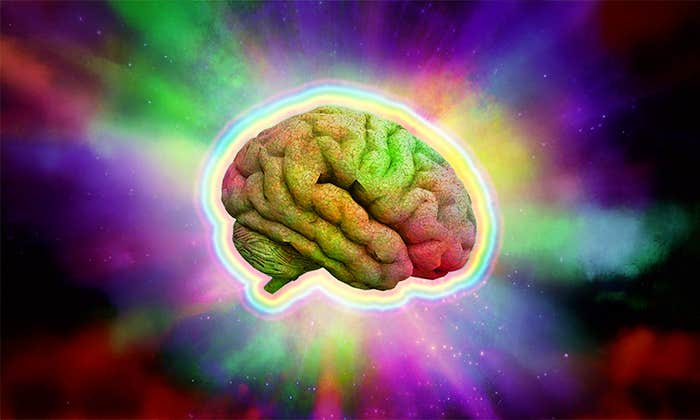In 2004 Peter König made a special belt: one that always vibrated on the side of it facing north. Put on the belt and face north, and it would vibrate in the front; turn to face west and it vibrated on the right side. König, a cognitive scientist at the University Osnabrück, Germany, gave it to a man named Udo Wächter to wear as part of a pilot study. After just six weeks, Wächter had developed an amazing and much-improved sense of direction. Even in a town 100 miles away, he could immediately point to his home.
You might know the direction of north at any moment, based on your surroundings, but we infer it from landmarks we see around us. We can’t sense north in the same way that a loggerhead turtle, a migrating bird, or even Udo Wächter could.
What does a blind person see? (It seems that blind people get asked this all the time.) Your first guess might be that she sees a vast blackness. But imagine telling a goose (who doesn’t know much about humans) that you can’t sense Earth’s magnetic field. The bird, baffled, asks, “So, what do you sense when you change the direction you’re facing??”
The answer, of course, is nothing. Just as blind people do not sense the color black, we do not sense anything at all in place of our lack of sensations for magnetic fields or ultraviolet light. We don’t know what we’re missing.
To try to understand what it might be like to be blind, think about how it “looks” behind your head. When you look at the scene in front of you, it has a boundary. Your visual field extends to each side only so far. If you spread your arms, and draw your hands back until they are no longer visible, what color is the space that your hands occupy? This space does not look black. It does not look white. It just isn’t.
Similarly, people with hemispatial neglect can’t see, and so ignore, one half of their visual field—either the right or left side. They eat only the food on the non-neglected side of their plate, for example. They don’t experience a black blob on the neglected side, blocking their vision. If they did, they’d intuitively sense that they have a problem. They don’t, just like we don’t sense a problem with not seeing behind us.
Blind people might not have perceptually driven visual imagery, but they use their other senses to encode spatial relationships. For example, suppose you take off your high heels under the table at a restaurant. When it’s time to get up, you might feel around with your feet for them, right them, and put them on, all without use of your eyes. You are able to do this because you are encoding spatial information with your haptic system, or sense of touch. The blind, too, use their other senses, such as hearing and touch, to form representations of the world.
This shows that the sensations (information delivered by organs like our eyes) can be distinct from perceptions (ideas about sensations formed by our brains). A similar memory encoding can be created with input from different senses. You can get a sense of distance of something from your eyes, ears, hands, and even your nose. All of these senses can map to spatial information that is usually thought of as visual.
That is what happened to Mr. Wächter with his belt. His brain, exhibiting plasticity, was able to map the vibrations felt on the skin of his waist to his sense of direction previously informed only by vision.
When the belt experiment was over, Wächter felt lost. For the most part, he did not feel a vague, directionless vibration in place of the real vibrations he’d previously sensed—although he did at times feel some “phantom” vibrations.
He felt the loss psychologically, but without the belt, he was experiencing the same thing you do when you try to look at what’s behind your head.
Nothing.
Jim Davies is an associate professor at the Institute of Cognitive Science at Carleton University in Ottawa, where he is director of the Science of Imagination Laboratory.


























